Data Analytics using SAS Course








Data Analytics using SAS certification course
What will I learn?
- Students will gain a solid understanding of the SAS programming language, including syntax, data structures, and procedural logic.
- Students will be able to generate descriptive statistics, frequency distributions, and graphical visualizations to summarize and explore datasets effectively.
- Students will demonstrate competence in creating informative and visually appealing graphical representations of data using SAS graphical procedures.
- Students will engage in collaborative learning activities, demonstrate professionalism in their work, and adhere to ethical standards in data analysis and reporting.
Requirements
- Basic understanding of statistics and probability
- Familiarity with programming concepts (preferably in any language)
Data Analytics Using SAS Course Content
- Introduction to SAS:
- Overview of SAS software and its components
- Understanding the SAS programming environment (SAS Studio, SAS Enterprise Guide)
- Basics of SAS syntax and structure
- Data Step Programming:
- Reading and importing data into SAS datasets
- Working with SAS datasets (creating, modifying, appending, merging)
- Data manipulation techniques (sorting, subsetting, conditional statements)
- SAS Functions and Formats:
- Overview of SAS functions (numeric, character, date and time)
- Working with SAS formats (DATE, DOLLAR, PERCENT, etc.)
- Customizing formats and informats
- Data Cleaning and Validation:
- Identifying and handling missing values
- Data validation techniques (range checks, consistency checks)
- Handling errors and invalid data
- Basic Statistical Analysis:
- Descriptive statistics (mean, median, mode, standard deviation, etc.)
- Frequency analysis (PROC FREQ)
- Summary statistics (PROC MEANS)
- SAS Procedures (PROCs):
- Introduction to SAS procedures and their use
- Common PROCs for data analysis (PROC PRINT, PROC SORT, PROC SUMMARY)
- Generating reports with PROC REPORT and PROC TABULATE
- Introduction to SAS Macro Language:
- Overview of SAS macro language and macro variables
- Creating and using macros
- Automating repetitive tasks with macros
- Data Visualization with SAS:
- Creating basic graphs and charts (PROC GPLOT, PROC GCHART)
- Customizing graphs (titles, labels, legends)
- Introduction to ODS (Output Delivery System) for generating reports
- Advanced Data Manipulation Techniques:
- Combining datasets (SET, MERGE)
- Working with character data (functions, concatenation)
- Advanced data manipulation techniques (arrays, do-loops)
- Debugging and Error Handling:
- Identifying and fixing common programming errors
- Using SAS log and output to debug programs
- Error handling techniques
- Introduction to SQL in SAS:
- Basics of SQL (SELECT, FROM, WHERE)
- Using SQL to manipulate and query SAS datasets
- Combining SAS and SQL for data analysis
- Real-world Case Studies and Projects:
- Applying SAS programming skills to solve real-world data analysis problems
- Hands-on projects to reinforce learning and practical skills
- Advanced Data Manipulation Techniques:
- Advanced conditional processing (IF-THEN/ELSE statements, WHERE statements)
- Subsetting data with advanced techniques (DO loops, arrays, SQL)
- Advanced sorting and merging techniques (complex sorting, one-to-many merging)
- SAS Macro Language Mastery:
- Macro variables and macro functions
- Advanced macro programming techniques (macro loops, macro arrays)
- Macro debugging and error handling
- Advanced Statistical Analysis:
- Advanced statistical procedures (PROC UNIVARIATE, PROC REG, PROC LOGISTIC)
- Multivariate analysis techniques (factor analysis, cluster analysis)
- Time series analysis (PROC TIMESERIES, PROC ARIMA)
- Efficiency and Performance Optimization:
- Improving program efficiency (techniques for reducing memory usage and CPU time)
- Performance optimization tips and tricks (indexing, compression)
- Performance monitoring and benchmarking
- Advanced Reporting and Output Delivery:
- Customizing and enhancing reports (advanced formatting, conditional highlighting)
- Creating interactive reports (ODS HTML, ODS PDF, ODS EXCEL)
- Output delivery customization with ODS destinations
- Advanced SQL in SAS:
- Advanced SQL techniques (subqueries, joins, set operators)
- Performance optimization in SQL queries
- Combining SAS and SQL for advanced data manipulation and analysis
- Data Quality and Validation:
- Data validation techniques for advanced data structures
- Handling complex data quality issues (data profiling, error detection)
- Advanced data cleansing and transformation techniques
- SAS Integration with External Systems:
- Integrating SAS with databases (PROC SQL, LIBNAME)
- Accessing and processing external data sources (Excel, CSV, XML)
- Using SAS with other programming languages (Python, R)
- Advanced Topics in SAS Programming:
- Handling large datasets (SAS data set options, compression techniques)
- Parallel processing with SAS Grid Computing
- Integrating SAS with cloud platforms (SAS Viya)
- Real-world Case Studies and Projects:
- Applying advanced SAS programming skills to solve complex real-world problems
- Hands-on projects and exercises to reinforce learning and practical skills
- Introduction to Data Analytics and SAS:
- Overview of data analytics concepts and methodologies
- Introduction to SAS software and its capabilities for data analysis
- Understanding the SAS programming environment (SAS Studio, SAS Enterprise Guide)
- Data Preparation and Management:
- Data import/export techniques (reading and writing data from/to external sources)
- Data cleaning and preprocessing (handling missing values, outliers, and inconsistencies)
- Data transformation techniques (variable creation, recoding, and restructuring)
- Exploratory Data Analysis (EDA):
- Descriptive statistics (summary statistics, frequency distributions, measures of central tendency and dispersion)
- Data visualization techniques (scatter plots, histograms, box plots, heatmaps)
- Exploring relationships between variables (correlation analysis, cross-tabulations)
- Statistical Analysis with SAS:
- Hypothesis testing (t-tests, ANOVA, chi-square tests)
- Regression analysis (simple linear regression, multiple regression)
- Non-parametric methods (Wilcoxon signed-rank test, Kruskal-Wallis test)
- Predictive Modeling:
- Introduction to predictive analytics concepts
- Building predictive models using SAS (logistic regression, decision trees, neural networks)
- Model assessment and validation techniques (ROC curves, confusion matrices, cross-validation)
- Time Series Analysis:
- Understanding time series data and its characteristics
- Time series forecasting techniques (moving averages, exponential smoothing, ARIMA models)
- Analyzing seasonality and trends in time series data
- Advanced Analytics Techniques:
- Cluster analysis (k-means clustering, hierarchical clustering)
- Association rule mining (market basket analysis)
- Text mining and sentiment analysis with SAS Text Miner
- Big Data Analytics with SAS:
- Introduction to SAS Viya and SAS Cloud Analytic Services (CAS)
- Working with large-scale datasets using SAS Viya
- Distributed computing and parallel processing with SAS Viya
- Data Visualization and Reporting:
- Creating interactive dashboards and reports with SAS Visual Analytics
- Customizing visualizations and reports for effective communication of insights
- Best practices for data visualization and storytelling with data
- Case Studies and Practical Applications:
- Applying SAS analytics skills to real-world datasets and scenarios
- Hands-on projects and exercises to reinforce learning and practical skills
- Ethical and Legal Considerations:
- Ethical issues in data analytics (privacy, bias, transparency)
- Legal regulations and compliance (GDPR, CCPA, HIPAA)
- Introduction to Clinical Trials:
- Overview of the clinical trial process (phases, design, regulations)
- Role of SAS in clinical research and pharmaceutical industries
- Understanding the importance of data integrity and regulatory compliance
- Data Management in Clinical Trials:
- Data collection methods (Case Report Forms, electronic data capture)
- Data standards (CDISC standards – SDTM, ADaM)
- Data cleaning and validation techniques specific to clinical data
- SAS Programming for Clinical Trials:
- Introduction to SAS programming in the context of clinical trials
- SAS datasets specific to clinical trials (SDTM, ADaM)
- Creating and managing clinical trial datasets using SAS
- Clinical Data Analysis:
- Descriptive statistics for clinical data (summary statistics, frequency tables)
- Statistical analysis for clinical trials (t-tests, ANOVA, survival analysis)
- Handling time-to-event data (Kaplan-Meier curves, Cox proportional hazards model)
- Safety and Efficacy Analysis:
- Adverse event analysis (AE/SAE reporting)
- Efficacy endpoint analysis (response rates, time-to-event endpoints)
- Safety and efficacy tables, listings, and figures
- Clinical Trial Reporting:
- Generating clinical study reports (CSRs) using SAS
- Creation of analysis datasets and outputs for regulatory submissions
- Automation of reporting processes using SAS macros and procedures
- Advanced Topics in Clinical Data Analysis:
- Advanced statistical techniques for clinical trials (mixed models, non-parametric methods)
- Handling missing data in clinical trials
- Meta-analysis of clinical trial data
- Regulatory Compliance and Good Clinical Practice (GCP):
- Understanding regulatory requirements (FDA, EMA, ICH guidelines)
- Ensuring compliance with GCP principles
- Documentation and audit trails in clinical trials
- CDISC Standards Implementation:
- Overview of CDISC standards (SDTM, ADaM, CDASH)
- Converting raw data to SDTM and ADaM datasets using SAS
- Validation and quality control of CDISC datasets
- Case Studies and Hands-on Projects:
- Applying SAS skills to analyze and report on real-world clinical trial data
- Hands-on exercises and projects to reinforce learning and practical skills
- Industry Trends and Emerging Technologies:
- Emerging trends in clinical research and data analysis
- Integration of SAS with other technologies (R, Python, cloud computing)
Get in touch
400+ Global Employment Partners

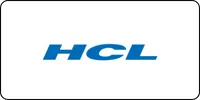
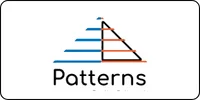





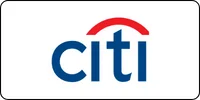

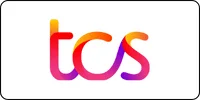


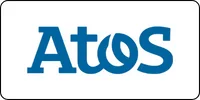
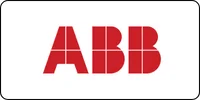

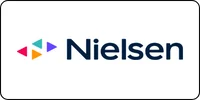

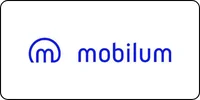
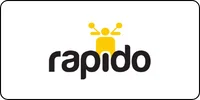



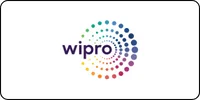
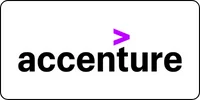

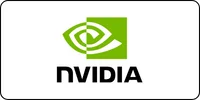
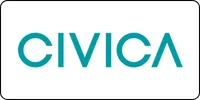
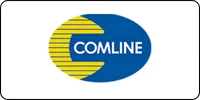
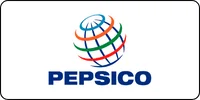

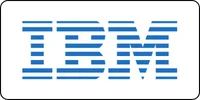
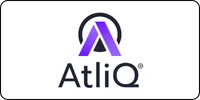
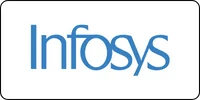

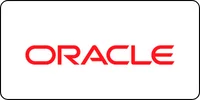
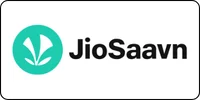

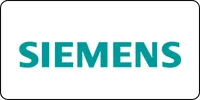
Why Choose Data Analytics Using SAS Certification Course from Bright Computer Education?

Designed Curriculum
Our curriculum covers everything from basic to advanced topics. Topics include variables, data types, control structures, functions, OOP, STL, and more.

Hands-on Learning
Dive into practical exercises and coding projects that reinforce learning and help you build real-world applications.

Experienced Instructors
Learn from industry experts with years of experience in C programming and software development.
Flexible Learning
Choose from flexible scheduling options, including self-paced learning or live virtual classes to fit your busy lifestyle.
Career Development
Gain valuable skills sought after by employers in various industries, from software development to embedded systems and beyond.
Interactive Learning
Engage with fellow learners and instructors through live Q&A sessions, discussion forums, and collaborative coding exercises.
Diverse Career Opportunities in Data Analytics Using SAS Exploring Paths in India's Technology Sector
Frequently Asked Questions
Recently View Courses
Course Details Curriculum Placement FAQ’s Data Analytics using Excel certification course The Data Analytics...
Read MoreCourse Details Curriculum Placement FAQ’s Data Analytics using SAS certification course The Data Analytics...
Read MoreCourse Details Curriculum Placement FAQ’s Data Analytics using R certification course The Data Analytics...
Read More
